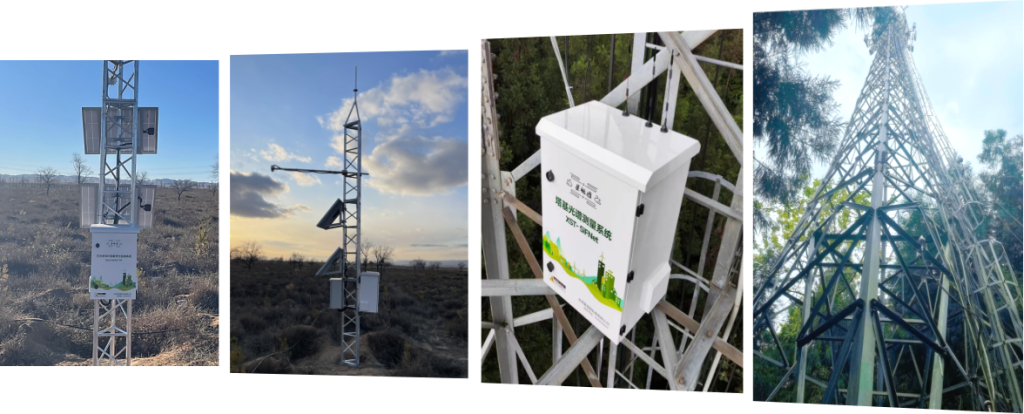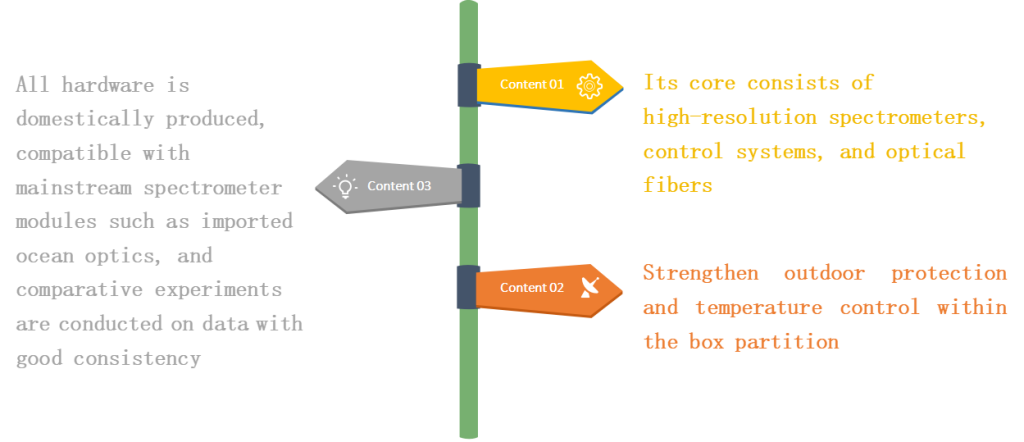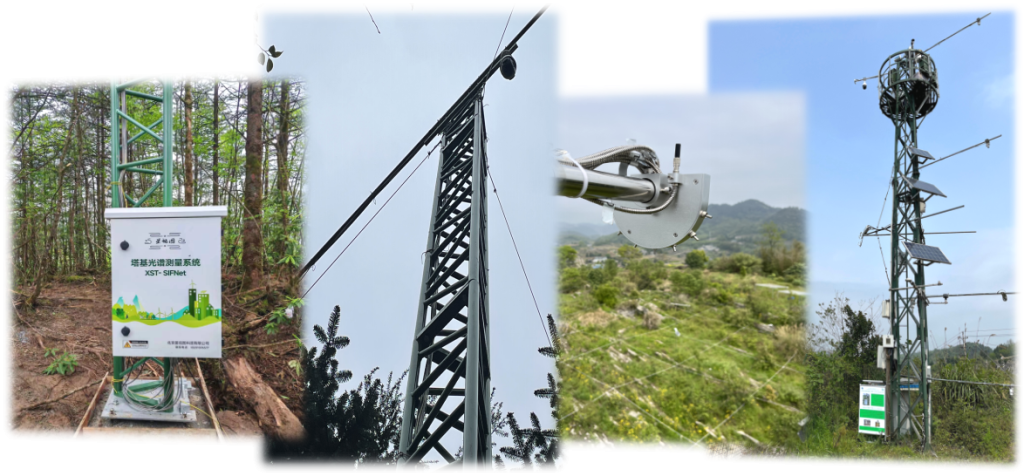XST-SIFNet Sunlight-induced chlorophyll fluorescencespectrograph

Long-term automated monitoring of spectral reflectance of features:High precision, low power consumption, built-in temperature control module, adapt to the field environment
Fluorescence parameters are calculated automatically:Built-in multiple SIF calculation models, real-time output of chlorophyll fluorescence calculation results
Cloud-based platform for data visualization:Visualization of real-time measured and synchronized calculated parameters
Multi-target detection function:Built-in automatic optical path switching module, realizing multi-target and multi-angle detection with one machine.
Browser-based interface:View and modify parameters at any time, support manual measurement, view and download data
Easy field commissioning and maintenance:Software configuration, debugging can realize remote network operation
Multiple data correction modules:Darkroom integrating sphere calibration, radiometric correction, spectral correction and dark current correction
Through the national research unit testing center testing, the national key laboratory regular data calibration benchmark machine
Product Overview
The XST-SIFNet sunlight-induced chlorophyll fluorescence spectrometer independently developed by Beijing StarView Technology Co., Ltd. integrates a high-resolution spectrometer module, an automatic optical switching control system and a data acquisition, storage and computation module, which provides a low-cost, high-efficiency and non-interfering plant growth monitoring solution for the realization of automatic acquisition of all-weather hyperspectral data and automatic output of a variety of vegetative growth parameters.

Product Features
Direct measurement of parameters
Spectral raw data, spectral reflectance, sunlight-induced chlorophyll fluorescence (SIF), normalized vegetation index (NDVI), red edge index (REI), etc.
Real-time simulation of calculated parameters
Total excitation fluorescence (SIFT), chlorophyll fluorescence yield (SIFY), photosynthesis rate (PSR), photosynthetically active radiation absorption ratio (FPAR), total primary productivity (GPP), and multiple vegetation indices
Support customization
Users provide customized parameter calculation models, we realize module embedded automatic calculation

Application Cases
XST-SIFNet Daylight-Induced Chlorophyll Fluorescence Spectrometer Observations at the Meteorological Service Hebi Agrometeorological Experiment Station, Summer 2023
SIF data and NDVI data, analyzed as follows:
NDVI values have been in a declining phase since the date of completion of the installation, indicating that the vegetation in this process has been in the late stage of wheat growth, the developmental period belongs to the period of decline, in which the green leaves in the canopy gradually decreased until to the beginning of June (June 10 corresponds to DOY = 161 days ago or so), wheat harvesting was completed, and there was a withered wheat canopy on the underlayer turned into a straw residue with almost no chlorophyll.
The trend of SIF value can basically reflect the change of vegetation decline process, while SIF value after DOY=170 days, due to the emergence of maize, there is a slight elevation, which may also be related to the growth of green weeds between the rows of straw residues in the field, while SIF in the overall trend of decreasing, there are some dates of the phenomenon of jumping, which is due to the PAR value on these dates has a significant elevation. From this result, we can also see that the interpretation of SIF needs to consider the combined effect of PAR and NDVI.


Technical Parameters
| Effective spectral range | 600nm-820nm (650nm-800nm) |
| spectral resolution | 0.3nm |
| signal-to-noise ratio | 1000:1 |
| Spectral sampling interval | 0.1nm |
| dynamic range | 5000 |
| Refrigeration and Temperature Control | Spectrometer independent thermostat compartment, dual cooling mode, using TEC semi-conductor and air-controlled cooling |
| wavelength calibration | Adopts Hg lamp and utilizes 9-point calibration to maximize wavelength accuracy |
| Stray light range | 0.06% @710 nm |
| cosine receiver | Spectralon material for UV resistance and automatic calibration. |
| Points time | Automatic optimization of integration time, customizable integration time, theoretical range 0.2ms~65s |
| Number of input channels | 2 fibers (1 incident and 1 reflected) as standard, supports up to 12 fibers (1 incident and 11 reflected) |
| optical field of view | Incidence 180°, Reflection 25° |
| system control | Modification of device parameters (e.g. measurement time and frequency) can be viewed and modified based on a browser, computer or cell phone. |
| spectral measurement | Automatic measurement can be interrupted based on a browser, computer, or cell phone to enter manual measurement mode |
| Spectral data visualization | Browser-based, real-time display of measurement results on computers and cell phones, data downloads |
| Data management software | Raw data and model calculations are saved locally and sent to the cloud at the same time (connection routing) |
| data transmission | Support wireless transmission through network port connected to router; support local output through RS485 serial port. |
| Running Power Consumption | Regular state power consumption of 24W, peak power consumption of about 60W; can be equipped with a time control switch sleep at night |
| Power failure restart function | Supports forced power off and power on reboot to avoid accidental power off resulting in device failure to start up |
| operating mode | Fully automated all-weather observation with automatic remote data return |